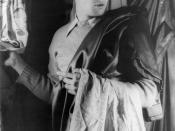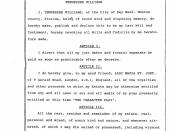The Amazing Dichotomies of "A Streetcar Named Desire"
Light and dark, kindness and cruelty, realism and fantasy, all of them dichotomies used by Tennessee Williams in A Streetcar Named Desire. Tennessee Williams uses many dichotomies, clear cut divisions, to illustrate main points. The most prominent dichotomy is the sweet and fragile Blanche opposed to the cruel and savage Stanley. The play also highlights other dichotomies such as strong and delicate, hidden and open, and purity and filth. Basically, Tennessee Williams uses dichotomies to show main points of theme, and Tennessee Williams also use dichotomies to show that viewing life in clear cut options with no grey area is a cause of many problems.
One of the main of the themes shown by Tennessee Williams is the fragile balance of delicate people and his or her shaky mental ground. For example, the dichotomy of shadows and lights in the play illustrates the fine line of sanity and insanity.
For instance, the point in the play where Mitch and Blanche are speaking and Mitch abruptly rips off the paper lantern is a perfect example of Blanche's sanity. The light, representing truth in general, is too much for Blanche to handle and she quickly draws back into the shadows. Blanche's example shows how delicate people are incapable of viewing the complete and absolute truth about his or herself, and use the shadows, or lies, to maintain the fine balance of sanity and insanity. Second, yet another theme supported by a dichotomy is the theme of difference of social classes. Blanche is an aristocratic, arrogant woman while Stanley is a common Polish person. The spilt shows that the once rich Blanche is quick to judge and look down on people while Stanley is more likely to give people a chance before...



Well done
Well written... I liked it.
0 out of 1 people found this comment useful.